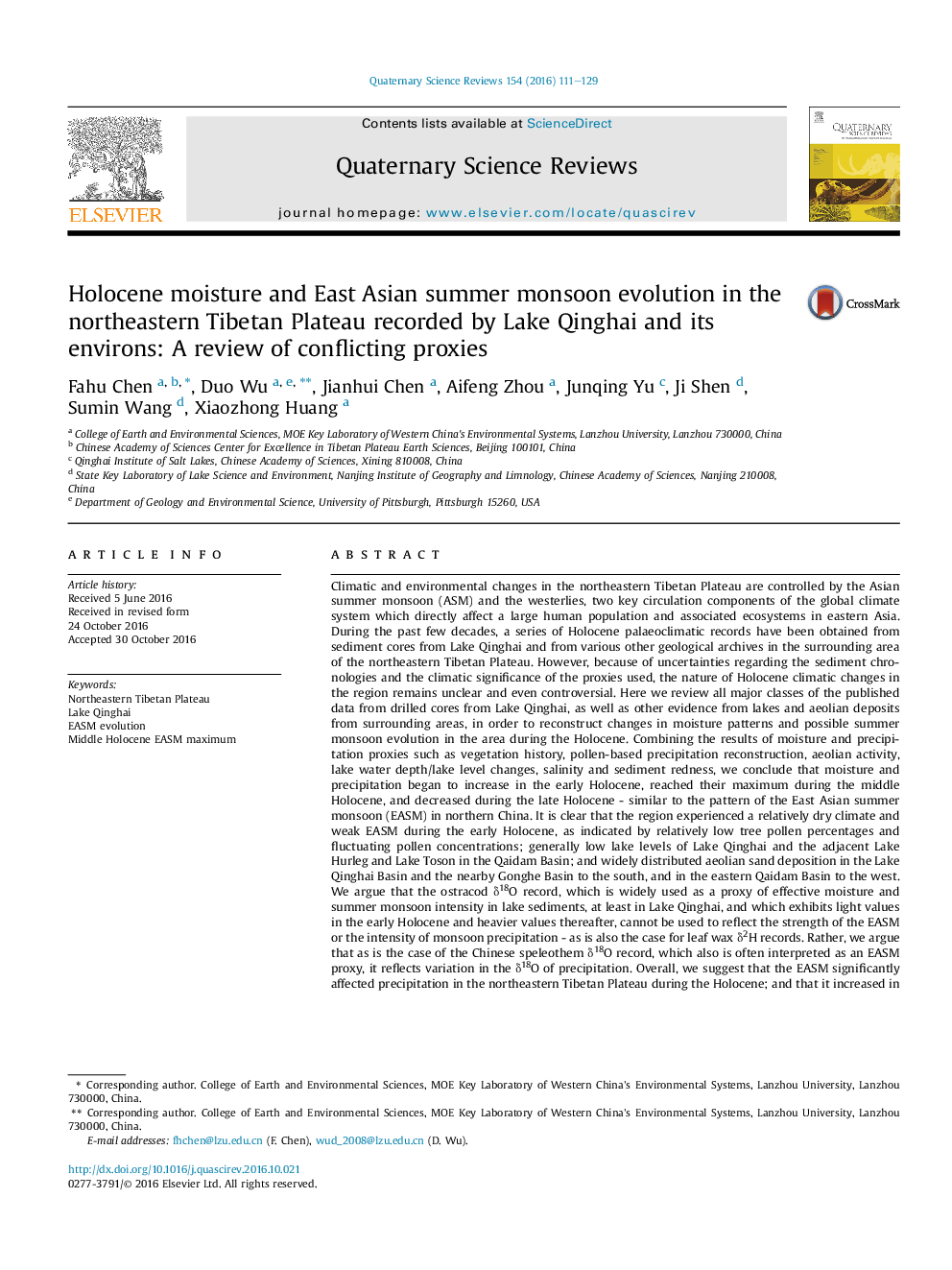| کد مقاله | کد نشریه | سال انتشار | مقاله انگلیسی | نسخه تمام متن |
|---|---|---|---|---|
| 6445355 | 1640781 | 2016 | 19 صفحه PDF | دانلود رایگان |
عنوان انگلیسی مقاله ISI
Holocene moisture and East Asian summer monsoon evolution in the northeastern Tibetan Plateau recorded by Lake Qinghai and its environs: A review of conflicting proxies
ترجمه فارسی عنوان
رطوبت هولوسن و تحولات موسمی تابستانی آستارا در ناحیه شمال شرقی تبتان توسط دریاچه چینگهای و اطراف آن ثبت شده است: بررسی پروکسی های متضاد
دانلود مقاله + سفارش ترجمه
دانلود مقاله ISI انگلیسی
رایگان برای ایرانیان
موضوعات مرتبط
مهندسی و علوم پایه
علوم زمین و سیارات
زمین شناسی
چکیده انگلیسی
Climatic and environmental changes in the northeastern Tibetan Plateau are controlled by the Asian summer monsoon (ASM) and the westerlies, two key circulation components of the global climate system which directly affect a large human population and associated ecosystems in eastern Asia. During the past few decades, a series of Holocene palaeoclimatic records have been obtained from sediment cores from Lake Qinghai and from various other geological archives in the surrounding area of the northeastern Tibetan Plateau. However, because of uncertainties regarding the sediment chronologies and the climatic significance of the proxies used, the nature of Holocene climatic changes in the region remains unclear and even controversial. Here we review all major classes of the published data from drilled cores from Lake Qinghai, as well as other evidence from lakes and aeolian deposits from surrounding areas, in order to reconstruct changes in moisture patterns and possible summer monsoon evolution in the area during the Holocene. Combining the results of moisture and precipitation proxies such as vegetation history, pollen-based precipitation reconstruction, aeolian activity, lake water depth/lake level changes, salinity and sediment redness, we conclude that moisture and precipitation began to increase in the early Holocene, reached their maximum during the middle Holocene, and decreased during the late Holocene - similar to the pattern of the East Asian summer monsoon (EASM) in northern China. It is clear that the region experienced a relatively dry climate and weak EASM during the early Holocene, as indicated by relatively low tree pollen percentages and fluctuating pollen concentrations; generally low lake levels of Lake Qinghai and the adjacent Lake Hurleg and Lake Toson in the Qaidam Basin; and widely distributed aeolian sand deposition in the Lake Qinghai Basin and the nearby Gonghe Basin to the south, and in the eastern Qaidam Basin to the west. We argue that the ostracod δ18O record, which is widely used as a proxy of effective moisture and summer monsoon intensity in lake sediments, at least in Lake Qinghai, and which exhibits light values in the early Holocene and heavier values thereafter, cannot be used to reflect the strength of the EASM or the intensity of monsoon precipitation - as is also the case for leaf wax δ2H records. Rather, we argue that as is the case of the Chinese speleothem δ18O record, which also is often interpreted as an EASM proxy, it reflects variation in the δ18O of precipitation. Overall, we suggest that the EASM significantly affected precipitation in the northeastern Tibetan Plateau during the Holocene; and that it increased in strength during the early Holocene, reached a maximum during the middle Holocene and decreased during the late Holocene.
ناشر
Database: Elsevier - ScienceDirect (ساینس دایرکت)
Journal: Quaternary Science Reviews - Volume 154, 15 December 2016, Pages 111-129
Journal: Quaternary Science Reviews - Volume 154, 15 December 2016, Pages 111-129
نویسندگان
Fahu Chen, Duo Wu, Jianhui Chen, Aifeng Zhou, Junqing Yu, Ji Shen, Sumin Wang, Xiaozhong Huang,
